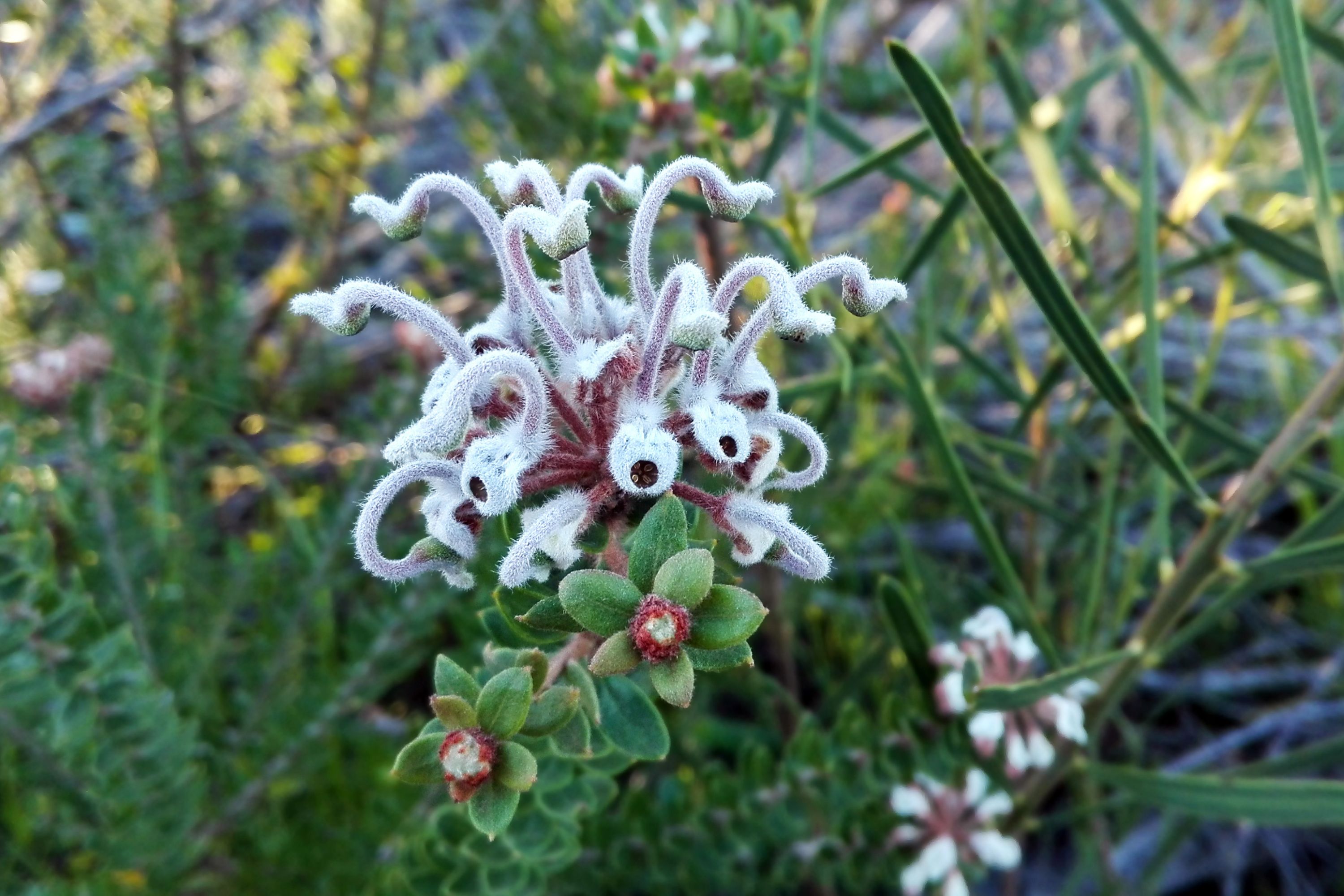Grey spider flower
(Grevillea buxifolia)

Description
Grevillea buxifolia, commonly known as grey spider flower, is a species of flowering plant in the family Proteaceae, and is endemic to New South Wales, Australia. It is an erect to spreading shrub with elliptic to egg-shaped leaves, and woolly-hairy clusters of rust-coloured to fawn flowers. Grevillea buxifolia is an erect to spreading shrub that typically grows to a height of 0.5–2 m (1 ft 8 in – 6 ft 7 in). The leaves are egg-shaped, narrowly oblong to elliptic, 7–35 mm (0.28–1.38 in) long and 2.0–8.5 mm (0.079–0.335 in) wide with the edges turned down or rolled under. The flowers are arranged in clusters on the ends of branchlets and are covered with woolly, rust-coloured to fawn and whitish hairs, the pistil 11–21 mm (0.43–0.83 in) long. Flowering mainly occurs from spring to autumn and the fruit is a usually hairy, oval follicle 18–22 mm (0.71–0.87 in) long. This species was first formally described in 1794 by James Edward Smith who gave it the name Embothrium boxifolium in his A Specimen of the Botany of New Holland. In 1810, Robert Brown changed the name to Grevillea buxifolia in Transactions of the Linnean Society of London. The specific epithet (buxifolia) means "box-tree-leaved". Grey spider flower grows in woodland or heath in New South Wales, on the South Coast, Central Coast and inland to near Pigeon House Mountain west of Ulladulla. Subspecies ecorniculata is restricted to the area between Putty, Gospers Mountain and Wollombi north-west of Sydney. Plants in the genus Grevillea are shrubs, rarely small trees with simple or compound leaves arranged alternately along the branchlets. The flowers are zygomorphic and typically arranged in pairs along a sometimes branched raceme at the ends of branchlets. The flowers are bisexual, usually with four tepals in a single whorl. There are four stamens and the gynoecium has a single carpel. The fruit is a thin-walled follicle that splits down only one side, releasing one or two seeds before the next growing season. The genus Grevillea was first formally described in 1809 by Joseph Knight from an unpublished manuscript by Robert Brown. Knight gave the spelling Grevillia, corrected by Brown in 1810 to Grevillea in Transactions of the Linnean Society of London. The genus was named in honour of Charles Francis Greville, an 18th-century patron of botany and co-founder of the Royal Horticultural Society.
Taxonomic tree:







